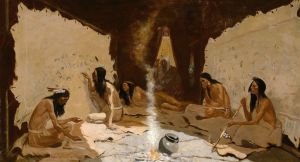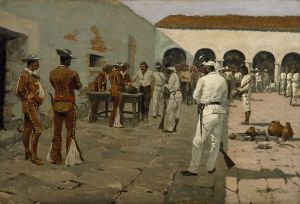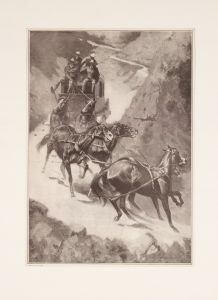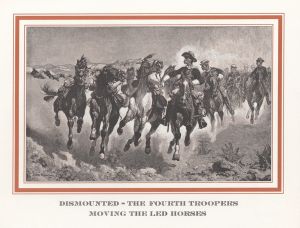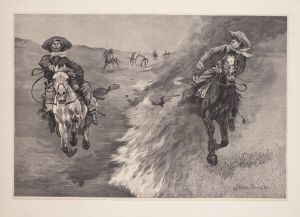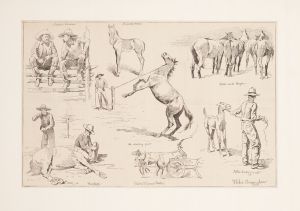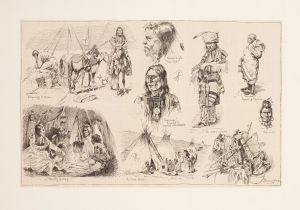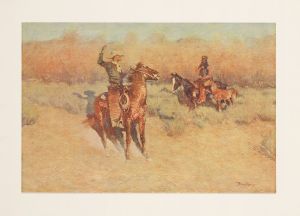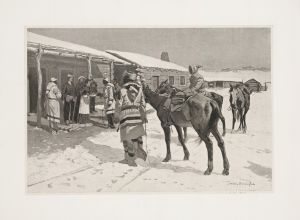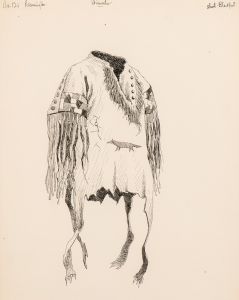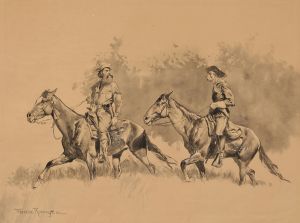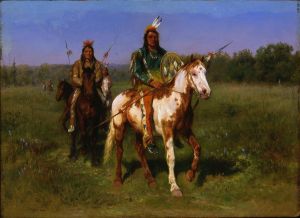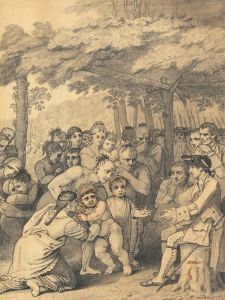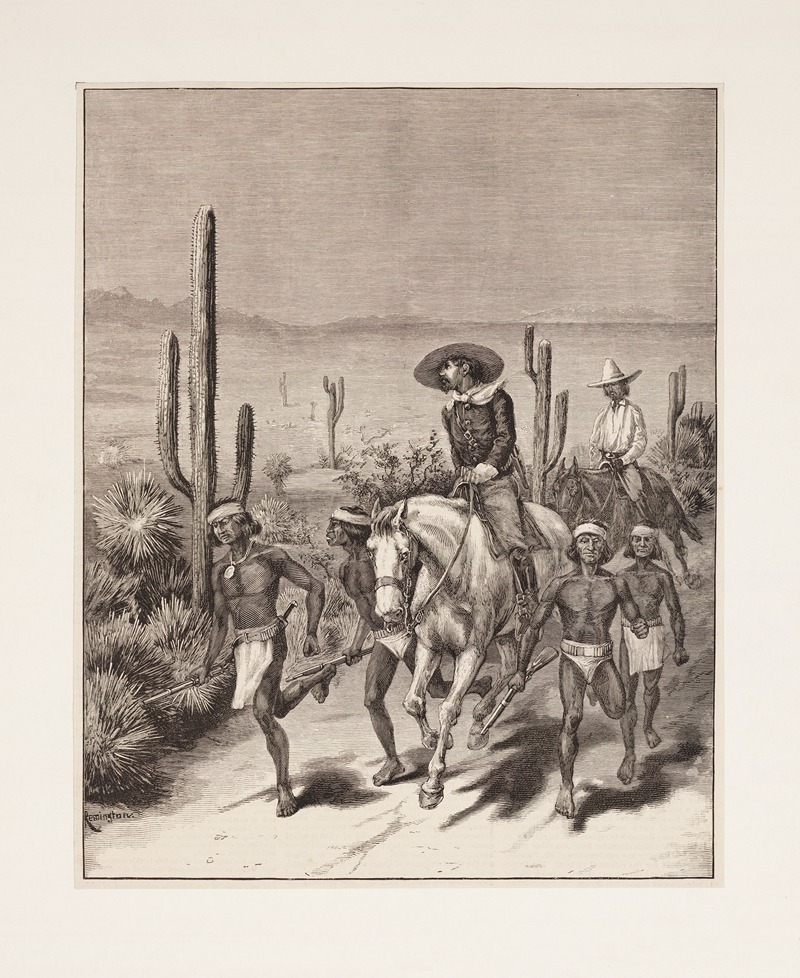
The Apache War–Indian scouts on Geronimo’s trail
A hand-painted replica of Frederic Remington’s masterpiece The Apache War–Indian scouts on Geronimo’s trail, meticulously crafted by professional artists to capture the true essence of the original. Each piece is created with museum-quality canvas and rare mineral pigments, carefully painted by experienced artists with delicate brushstrokes and rich, layered colors to perfectly recreate the texture of the original artwork. Unlike machine-printed reproductions, this hand-painted version brings the painting to life, infused with the artist’s emotions and skill in every stroke. Whether for personal collection or home decoration, it instantly elevates the artistic atmosphere of any space.
Frederic Remington's painting The Apache War–Indian scouts on Geronimo’s trail is a work that reflects the artist's focus on the American West and its historical narratives. Created by Remington, who was renowned for his depictions of the frontier, the painting portrays a group of Native American scouts tracking the trail of the Apache leader Geronimo during the late 19th century. This period was marked by the Apache Wars, a series of conflicts between the United States government and various Apache groups, including those led by Geronimo.
The painting captures a moment of tension and pursuit, with the scouts depicted in a rugged, desert-like environment. Remington's attention to detail in the landscape and figures reflects his commitment to authenticity, a hallmark of his work. He often conducted extensive research and traveled to the West to observe and document the people, environments, and events he portrayed. The use of Native American scouts by the U.S. military was a common practice during the Apache Wars, as these individuals possessed invaluable knowledge of the terrain and tracking skills.
Geronimo, a prominent leader of the Chiricahua Apache, resisted U.S. and Mexican military campaigns against his people for decades. His resistance became symbolic of Native American struggles during the westward expansion of the United States. The pursuit of Geronimo and his followers culminated in his eventual surrender in 1886, marking the end of the Apache Wars.
While the painting does not depict a specific historical event, it is representative of the broader themes of conflict, survival, and cultural interaction during this era. Remington's work often romanticized and dramatized the West, but it also served as a visual record of a rapidly changing period in American history.
The exact date of creation for The Apache War–Indian scouts on Geronimo’s trail is not widely documented, and specific details about its commission or initial exhibition are unclear. However, it is consistent with Remington's broader body of work, which frequently explored themes of military life, Native American culture, and the challenges of life on the frontier.
As with many of Remington's works, this painting reflects the perspectives and attitudes of its time, which can include biases and stereotypes. Modern viewers and scholars often analyze such works within the context of their historical and cultural significance, while also acknowledging their limitations in representing the complexities of the subjects depicted.





